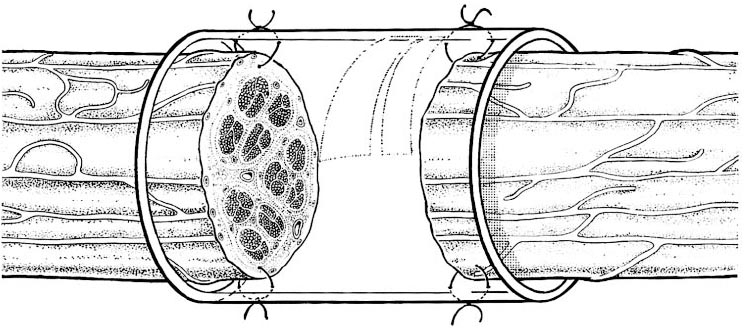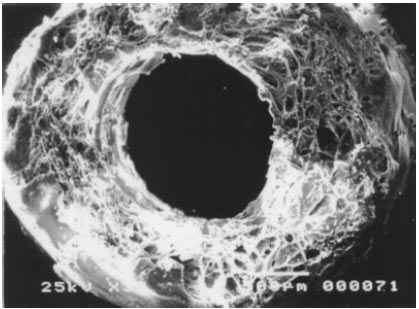E-mail:
There are a number of possible materials that can be used as scaffolds for nerve guidance channels. There are many factors to consider when using a particular material, including the size (diameter), immune response, mechanics, porosity, degradation rate, and electrophysiology. Excellent scaffolds should be easily accessible, easily adjusted, and easily sterilized. In addition, they must be able to withstand the normal physiological loads as native nerves. And finally, nerve guidance channels must initially contain all the components and degrade at a rate equivalent to growth, while maintaining an environment for axonal regeneration (Figure 1). The two possible types of material are either synthetic or natural.

Figure 1. Scaffold between the proximal and distal nerve.2
Synthetic material can be further broken down into bioabsorbable and non-bioabsorbable conduits. With non-bioabsorbable material, they are foreign in the body and have the possibility of eliciting an immune response. Examples of current non-bioabsorbable synthetic materials are silicone, polytetrafluoroethylene (PTFE), polyethylene, and polyvinyl. A couple bioabsorbable materials used today include polyesters, such as poly(L-lactic acid) (PLLA), polyglycolic acid (PGA). 4,5,6

Figure 2. Porous PLGA nerve conduit.3
An excellent material to use is one that is already found in the body. As a result, some forms of natural materials include veins, laminin, fibronectin, and collagen. These provide great material, however, can still cause an immune response if not properly treated and can vary from batch to batch, making it difficult to control mechanically.3 In addition, current research includes using a combination of both natural/synthetic and synthetic/synthetic material as scaffolds, as seen in Figure 2, where a poly(DL-lactic-co-glycolic acid) (PLGA) is used.4,5,6
One major drawback to using both natural and synthetic scaffolds is the inability of axonal regeneration over long gaps. In addition, synthetic scaffolds can cause scarring, resorption, and even collapse. Finally, synthetic materials can even release cytotoxic byproducts which will affect nerve regeneration.4,5,6